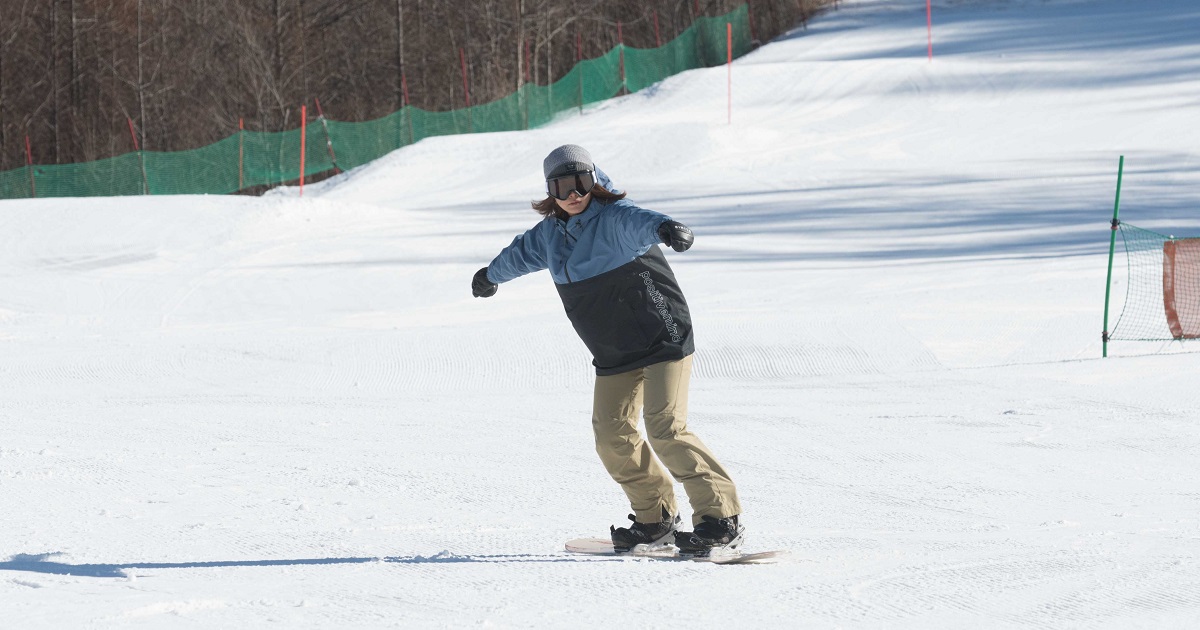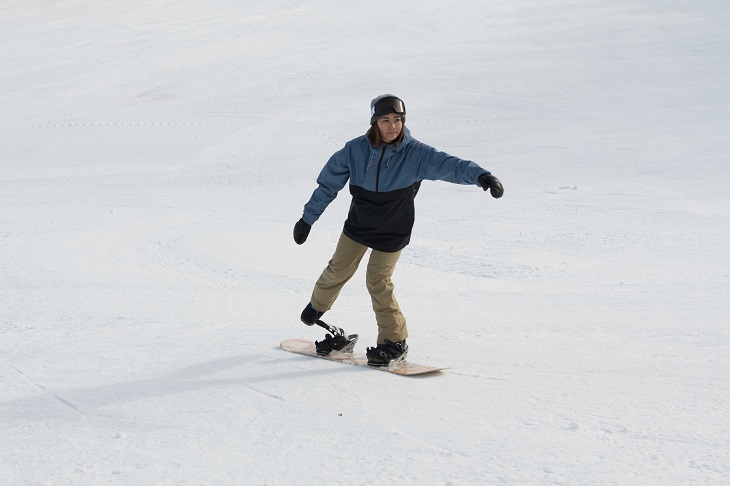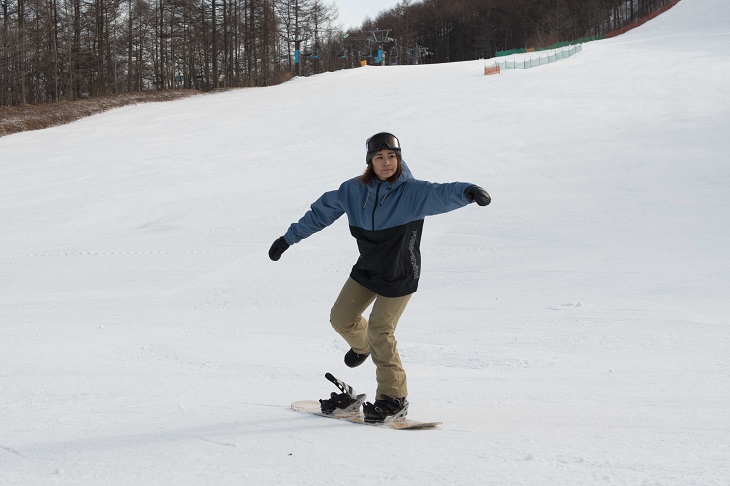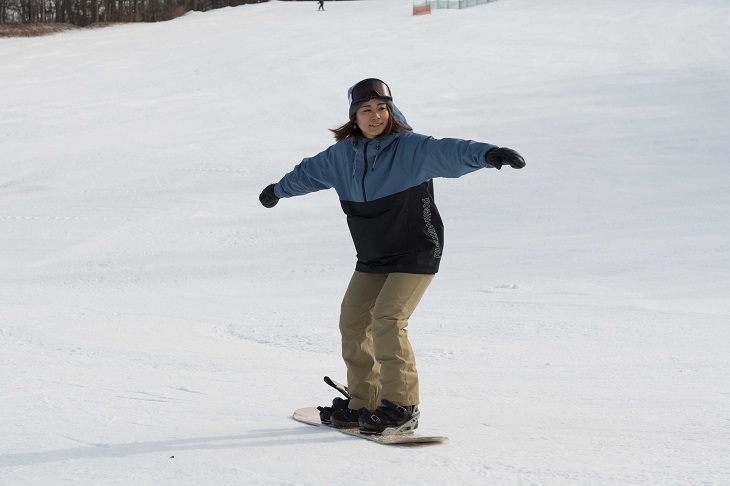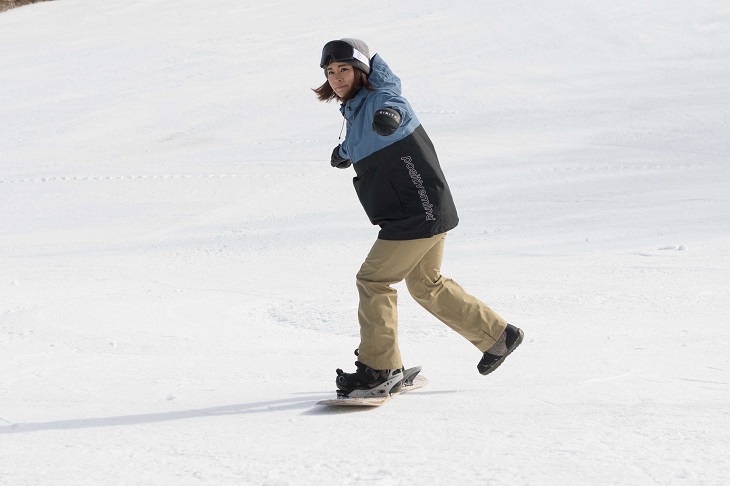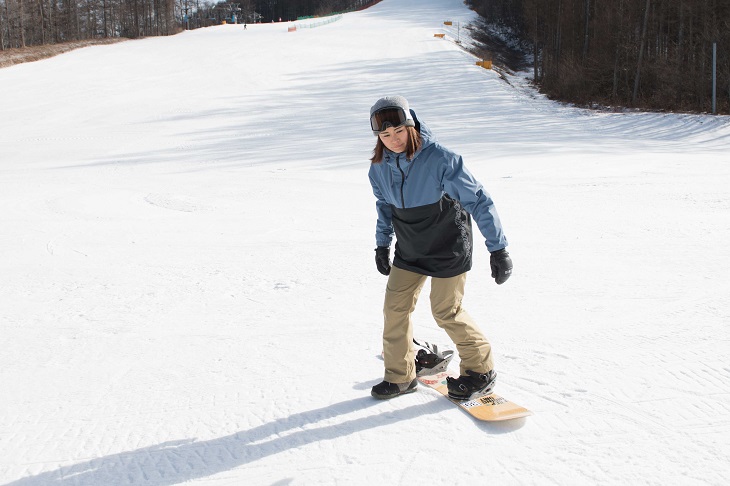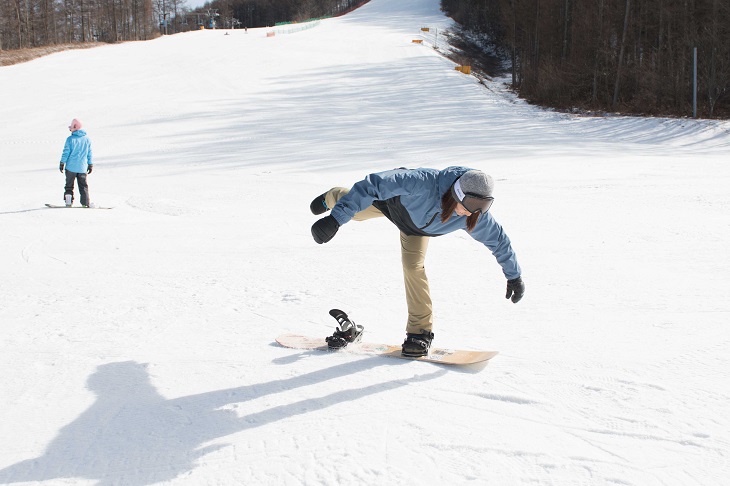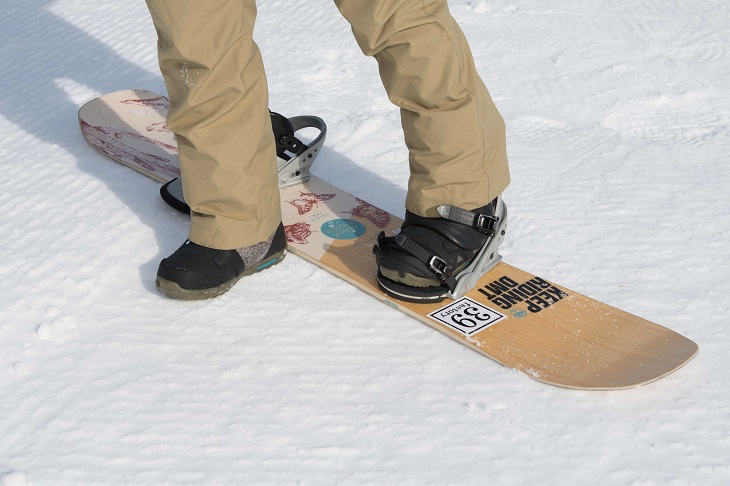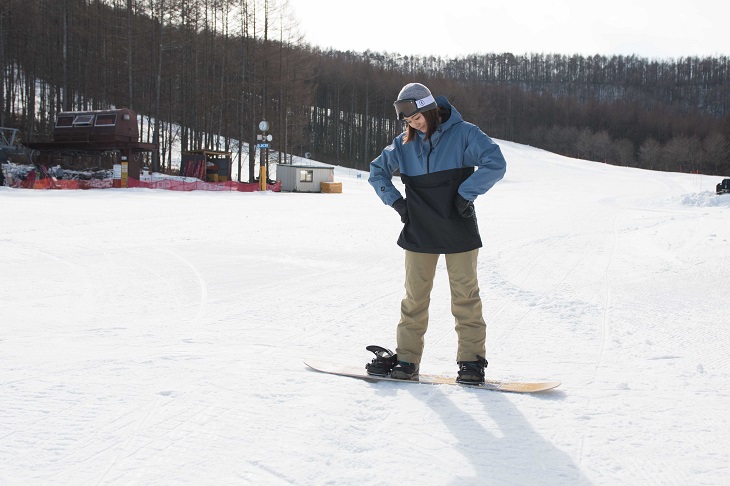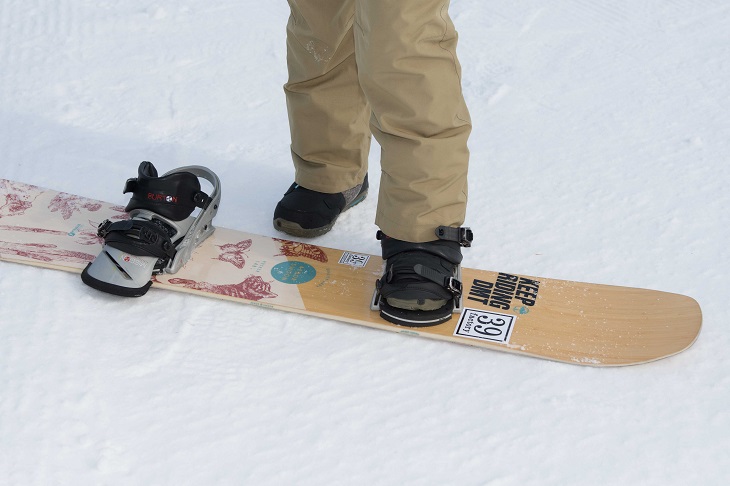Snowboards can travel smoothly over snow. First, choose a flat surface with no inclination to practice. Then, affix just one foot to the snowboard and familiarize yourself with how the snowboard moves. Try to make the board slide by kicking off against the snow using your back foot, which is not affixed to the board. Gain your balance according to the snowboard's movement and experience the sensation of sliding over the snow with the entire base.
Kick off with your foot
Place your back foot, which is not affixed to the snowboard, on the toe side. When doing this, bring the knee of your back leg close to the knee of your front leg. Stretch out your arms and turn your face in the direction you want to go.
Kick against the snow with your back foot and then transfer weight onto your front foot.
Place the kicking foot on the snowboard and start snowboarding. Repeat this movement to travel forward while skating.
Next, place your foot on the heel side and practice moving forward while kicking off from the snow. When doing this, remember to bring the knee of your back leg close to the knee of your front leg.
Kick off from the snow with your back foot while facing in the direction of travel to make the snowboard slide. Rather than looking down, make sure that you continuously look toward the horizon.
Precautions
If you become anxious and look downward, you will move forward. Keep your body upright and face in the direction of travel.
Take care that your body doesn't lag behind the snowboard, causing you to be on a slant. This makes it more likely to lose your balance, and can make it seem like the snowboard is moving faster.
stop
If you lose your balance and are about to fall over, keep calm and put your back foot, presently on the snowboard, onto the snow. Placing your foot on the snow stops the snowboard and stabilizes your body, preventing you from falling.
You may place with either the nose or tail side.
photo & text : Chiho Kuriyama
